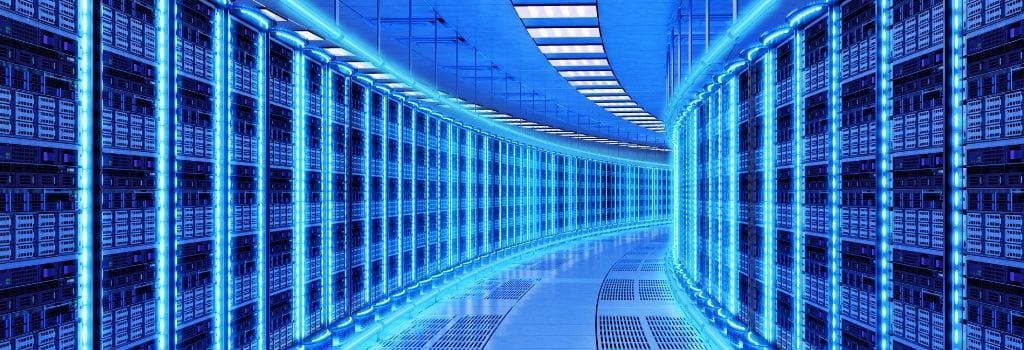- Category: Intelligent Systems
Data centers are and will continue to serve as the backbones of our modern world. From watching your favorite shows on video streaming platforms to communicating with colleagues overseas, data centers enable the online services and resources that empower the way we live and work. As a result, ensuring the optimal operation and security of our data centers is crucial. To realize this, data center administrators require the ability to collect, consolidate, and analyze data across the board. This is best achieved via Data Center Infrastructure Management (DCIM) that leverages surveillance technologies, network appliances, sensors, and monitoring software. Through effective DCIM, administrators have an indispensable tool to measure, manage, and control data center utilization and energy consumption of all IT-related equipment and facility infrastructure components, including air conditioning systems.
Read more: Realizing Efficient Data Center Infrastructure Management
- Category: Transportation
Digital police camera systems depend on a good-sized data store. Without it, police cars would have to download video manually at the end of every shift. Additionally, in-vehicle car video systems are not reliable as they are too fragile for the constant wear and tear of police usage. Police vehicles face constant shock, vibration, and exposure to nature’s elements, like wide temperatures and humidity.
Read more: Rugged In-vehicle Computer Empowers Police Car Remote Surveillance System
- Category: SD-WAN
In order to maintain high customer responsiveness, increase sales, and reduce wide area network costs and complexities, large-scale retailers are turning to software-defined wide-area networking (SD-WAN) systems. SD- WANs run on virtualized servers that deliver high availability and agile branch office connectivity. Intel® Network Builders partner Lanner Inc. recently worked with SD-WAN expert 128 Technology to deliver SD-WAN for 5,000 stores of a nationwide auto parts retailer.
Read more: Lanner and 128 Technology Deploy 5,000-Store Retail SD-WAN
- Category: Power and Energy
Like most people in the developed world, you probably take access to clean water for granted. Whether in the bathroom flushing the toilet, in the kitchen washing vegetables, or outside watering your lawn, clean water is always just a faucet away. What's more, people also take for granted a clean living environment free from human waste and the nasty diseases that come with it. Unless you have watched a documentary film about wastewater treatment, you've likely had never given it a second thought on where your waste goes and where your clean water comes from. The fact of the matter is that wastewater treatment is a comprehensive and time-consuming process that requires constant vigilance and a vast network of pipes. Given its complexity, even the tiniest malfunctions, such as a leaky pipe, can cause massive disruptions to the entire process and negatively affect customers and the environment. Luckily, in the twenty-first century, we benefit from technology to help us manage the complexities of wastewater treatment and water distribution; among them are computer-based remote monitoring solutions.
Read more: Keeping the Water Flowing 24/7 with Cellular Gateways
- Category: Telecommunication
With the deployment of 5G networks globally, the importance of network edge, particularly in terms of performance and programmability, is ever more critical for consumers and service providers. If you are unfamiliar with the concept, network edge is simply a distributed computing paradigm that brings computation and data storage as close to the point of request as possible to deliver low latency and save bandwidth. Network edge empowers service providers with the openness, agility, and scalability they need to deliver a full range of services and applications to their customers, efficiently and economically.
Read more: Programmable Network Platform Empowers Scalable Firewall for the Network Edge
- Category: Industrial Automation
IoT and IIoT technology deployment using edge sensors and devices succeeded in making Smart Farming possible. Techniques and knowledge are now available to those wishing to implement industrial automation that guarantees excellent results in the agriculture business, or in this case, indoor orchids cultivation.
Read more: Cultivating Orchids Indoors Using Edge AI Video Analytics Solutions
- Category: Transportation
Today operators and providers are pushing full speed ahead into 5G network deployment to meet the exponential growth of mobile data usage and 5G applications. Operators and providers need to walk a fine line between upgrading their network architecture quickly and continuing to provide existing customers with uninterrupted, uncompromised services. This is also happening in parallel with the added challenge of keeping operating and upgrade expenses to a minimum. As a result, service assurance is a critical discipline for the successful upgrade of network architecture. An effective end-to-end service assurance system evaluates problems, ranks them based on their impact level, and prioritizes corrective actions. It is indispensable for operators and providers to leverage service assurance to ensure the rapid deployment of their 5G networks while maintaining or exceeding the level of services they provide to their existing customers.
Read more: Empowering 5G Deployment with a Robust Service Assurance Platform












